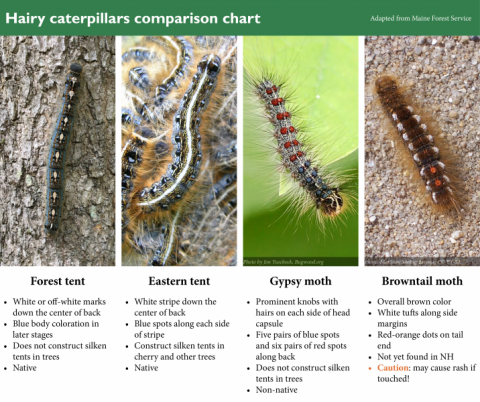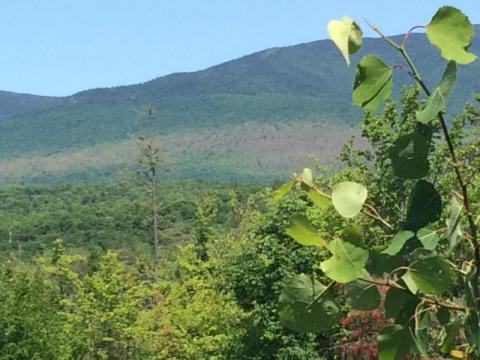Native insects and diseases cause problems, too. Scroll down to see information on caliciopsis pine canker, white pine needle damage, and forest tent caterpillar.
You can submit a report on this website or you can send samples to one our labs:
Plant Health Diagnostic Lab
Insect Identification Center
Analytical Services and Soil Lab
Caliciopsis Pine Canker
Caliciopsis pine canker was first reported in New Hampshire in 1997. This native canker is posing a growing problem for pines across New Hampshire and several other eastern states. Most commonly it is found on Pinus strobus (white pine) in New England, New York, Virginia, West Virginia, Quebec and Ontario, but has also been reported on P. rigida, P. pungens, P. echinata, P. virginiana in North America, and was first found on P. resinosus (red pine) in New Hampshire in 2012. It has also been reported in Europe on P. pinaster and P. radiata and in Germany on P. pumilo and Abies species.
Caliciopsis pinea can be found in dense pine stands in sandy and well-drained soils. Signs of possible C. pinea infection include cankerous growths and significant sapping, as well as crown thinning and decreases in crown density.
The Basics
Caliciopsis CankeR PEST ALERT NH Division of Forests and Lands
Firewood Quarantines
STORY MAP
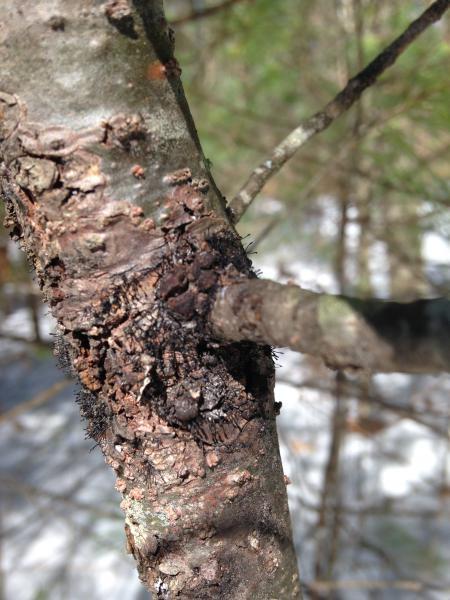
Photo courtesy of Jen Weimer.
Research Publications:
- Extent and Severity of Caliciopsis Canker in New England, USA: An Emerging Disease of Eastern White Pine (Pinus strobus L.). Forests 2015, 6, 4360-4373.
- Soil and Stocking Effects on Caliciopsis Canker of Pinus strobus L. Forests 2016, 7(11), 269.
- Economic Implications of a Native Tree Disease, Caliciopsis Canker, on the White Pine (Pinus strobus) Lumber Industry in the Northeastern United States. Kara K.L. Costanza; Mindy S. Crandall; Robert W. Rice; I.A.; William H. Livingston; Isabel Munck; Kyle Lombard. Canadian Journal of Forest Research, 2019, 49(5): 521-530. Story Map
White Pine Needle Damage
In recent years, landowners and foresters in the northeast have seen browning of white pine needles in the spring and early summer. Three fungi appear to be the culprits. They include Mycosphaerella dearnessii, Lophophacidium dooksii and Bifusella linearis.
The Basics
Eastern White Pine Needle Damage Pest Alert US Forest Service, 2011
Monitoring Eastern White Pine Decline and its Causes
Dramatic Needle Browning and Canopy Dieback of Eastern White Pine (Pinus strobus) in Southern New England UMass Extension, Spring 2016
Eastern White Pine Needle Damage Survey 2011
Firewood Quarantines
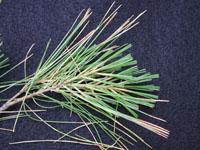
Forest Tent Caterpillar
Forest tent caterpillar is a native insect that is a natural part of our ecosystem. At times, as in the summer of 2016, forest tent caterpillars can cause extensive defoliation in hardwood forests. Defoliation can stress trees, but most trees will recover.
We will provide updates on outbreaks as more information becomes available.
The Basics
Forest Insect & Disease Leaflet 9 - USDA Forest Service
Tent Caterpillars
Vermont Forest Health--Forest Tent Caterpillar Update June 2016
Hairy Caterpillars Comparison Chart
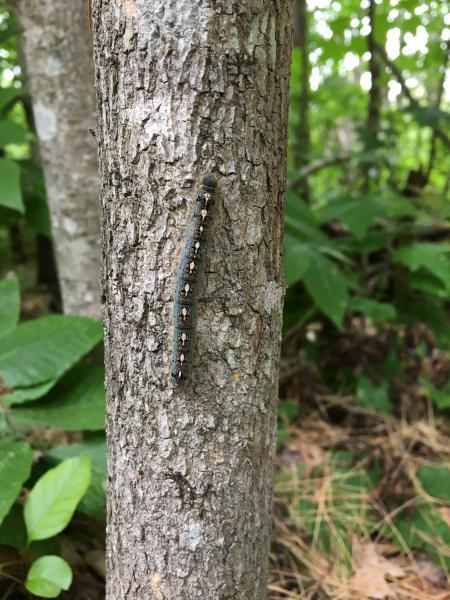
Recommended Actions Regarding Forest Tent Caterpillar Defoliation on NH Forestlands
These recommendations have been developed with the approval of the Forest Pest Advisory Group (FPAG) which is comprised of pest specialists representing the NH Division of Forests and Lands, US Forest Service, NH Department of Agriculture Foods and Markets, UNH Cooperative Extension, The Society For the Protection of New Hampshire's Forests, and the USDA Animal and Plant Health Inspection Service. These organizations are brought together by the State Forester to provide oversight in the management of major forest pest outbreaks. Please keep in mind that FTC is native to New Hampshire and its parasites, predators, and diseases have historically ended our past FTC outbreaks- usually before significant forest impacts occurred.
Recommended forest management practices in FTC-defoliated forests:
We recommend that you postpone timber harvesting in forests that have been defoliated by FTC. Historically FTC only lasts a few years in any one stand and only 3-6 years state-wide. Wait at least two growing seasons after the outbreak subsides to allow depleted energy reserves within the trees time to recover. Adding additional tree stresses from soil compaction, root and basal wounding, and crown breakage during timber harvesting could increase the severity of defoliation's impact and cause increased crown dieback, reduced growth, root rots, and mortality of residual trees. This time interval also allows for trees that will die to succumb helping to discriminate between trees to harvest and residual trees. Lastly, FTC outbreaks may last longer in thinned stands because FTC's natural enemies are more effective in closed canopy situations. Tailor your management decisions to specific site factors and landowner objectives. Sites with better soils should minimize tree stress and with one or two defoliations may allow you to enter these stands sooner after the outbreak ends. Landowners who are practicing even-aged management through the use of clear-cutting won't be affected because the outbreak shouldn't effect establishing early successional species.
Recommended actions within an active sugarbush:
The Division of Forests and Lands and the Forest Pest Advisory Group (FPAG) support the use of aerial applications of registered insecticides in forests and sugarbushes and recommend it for FTC control when: 1) the trees have already been severely defoliated two years in a row; and 2) winter egg mass counts predict a third severe defoliation the next year.
Although the Division of Forests and Lands cannot organize and coordinate a spray program, we are available to help sugarbush operators assess damage to their forest and predict how much defoliation can be expected in the following year. This information could help determine if conservatively tapping in some areas or not tapping at all within a particular site on the property may be an effective management strategy.
Effectively controlling FTC defoliation with insecticides is logistically difficult to accomplish. The preferred material for application is the bacterium Bacillus thuringiensis var. kurstaki (Btk) and it's most effective on young caterpillars. FTC eggmass populations hatch at separate times within a 2-3 week window on trees and in forest stands. This creates a wide variety of caterpillar sizes within a forest block making the timing of spray difficult. Also, weather during an ideal spray window, in mid to late May, is often poor and postpones application. Be prepared to accept that a spray application may not achieve control worthy of the project's cost.


